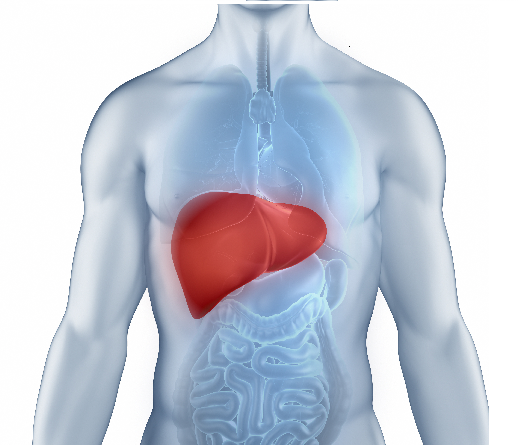What are the Different Types of Infertility?
- 21 Jun, 2024
- Written by Team Dr Lal PathLabs
Medically Approved by Dr. Seema
Table of Contents
 Infertility is a common issue affecting 18.7 out of every 1,000 women in India according to the National Institute of Health. Infertility can be a difficult and devastating diagnosis for couples longing to have a child, often leaving them with feelings of sadness, frustration, and even isolation. It’s a diagnosis that can feel isolating and overwhelming, especially when the cause is unclear.
Infertility is a common issue affecting 18.7 out of every 1,000 women in India according to the National Institute of Health. Infertility can be a difficult and devastating diagnosis for couples longing to have a child, often leaving them with feelings of sadness, frustration, and even isolation. It’s a diagnosis that can feel isolating and overwhelming, especially when the cause is unclear.
There are various types of infertility based on different factors that cause it. Categorising the type of infertility is the first step towards effective treatment. Understanding the specific type helps in determining the appropriate medical intervention needed.
What is Infertility?
Infertility is a medical condition diagnosed when a couple has been actively trying to achieve conception and pregnancy for a year or more without success despite having regular, unprotected intercourse. It can affect both men and women and can result from various underlying health issues or lifestyle factors.
Diagnosing the condition involves a series of infertility tests and evaluations. For women, this may include ovulation tests, hormone level assessments, and imaging tests like ultrasounds. For men, semen analysis and hormone tests are common diagnostic procedures.
Early diagnosis is crucial for effective treatment. Identifying the cause of infertility allows healthcare providers to customise treatment plans to the specific needs of the individual or couple.
How Many Types of Infertility Are There?
Infertility can be broadly categorised into three main types: primary infertility, secondary infertility, and unexplained infertility.
Primary Infertility
Primary infertility is the diagnosis given to couples who have never been able to successfully conceive, have been trying to conceive for at least a year without success, and have no history of previous pregnancies. This type is often diagnosed when a couple tries to have a child for the first time and fails to achieve pregnancy. Causes of primary infertility can include ovulatory disorders, tubal blockages, male factor infertility, and other underlying health conditions.
Secondary Infertility
Secondary infertility is a condition diagnosed when a couple who has successfully conceived and had a child in the past faces difficulty getting pregnant again despite trying for a year or more. Factors contributing to secondary infertility may include age-related decline in fertility, changes in health conditions, complications from previous pregnancies, or lifestyle changes. This type of infertility can be emotionally challenging, as couples often assume they will have no trouble conceiving again after a successful first pregnancy.
Unexplained Infertility
Unexplained infertility is diagnosed when no specific cause can be identified despite a thorough medical evaluation of both partners. Unexplained infertility may result from subtle, undetectable factors affecting either partner or a combination of minor issues that collectively hinder conception.
What are the Causes of Infertility?
Causes of Infertility in Women are:
- Ovulatory Disorders: In women, conditions such as polycystic ovary syndrome (PCOS) and hypothyroidism can disrupt regular ovulation. These disorders affect hormone production, leading to irregular or absent menstrual cycles and, consequently, infertility.
- Tubal Blockages: Fallopian tubes can become blocked or damaged due to pelvic inflammatory disease (PID), endometriosis, or previous surgeries. Blocked tubes prevent the sperm from accessing the egg or the fertilised egg from travelling to the uterus.
- Uterine Abnormalities: Structural issues within the uterus, such as fibroids, polyps, or congenital anomalies, can interfere with embryo implantation and growth. These abnormalities can lead to difficulties in conceiving or maintaining a pregnancy.
- Age-Related Factors: Women’s fertility naturally declines with age, particularly after age 35. This decline is due to a reduction in both the quality and quantity of eggs.
Causes of Infertility in Men are:
- Low Sperm Count: Insufficient sperm production can significantly reduce the chances of fertilising an egg. This may be due to factors like genetic defects, hormonal imbalances, and lifestyle factors like smoking or obesity.
- Poor Sperm Motility: The sperm must be able to swim effectively to reach and fertilise the egg. Poor motility can be caused by structural abnormalities, infections, or various lifestyle choices.
- Abnormal Sperm Shape: Sperm with morphological defects may struggle to penetrate and fertilise the egg. These defects can be due to genetic factors, infections, or exposure to toxins.
- Testicular Issues: Conditions such as varicoceles (enlarged veins within the scrotum), undescended testes, or trauma to the testicles may affect sperm production and quality.
- Hormonal Imbalances: Problems with testosterone and other hormones essential for sperm production can result from disorders of the pituitary gland or hypothalamus, affecting overall sperm quality and quantity.
Infertility can stem from various factors, including ovulatory disorders, tubal blockages, uterine abnormalities in women, low sperm count, poor sperm motility, and testicular issues in men. Recognising these signs and causes early can lead to effective diagnosis and treatment.
Seeking medical advice can help couples get an accurate diagnosis and timely treatment. Early intervention can often help achieve a healthy pregnancy. Consult with a medical provider and schedule a test with Dr Lal PathLabs today!
FAQs
1. How is infertility diagnosed?
Diagnosis involves various tests such as ovulation tests, hormone level assessments, ultrasounds for women, and semen analysis and hormone tests for men.
2. Can lifestyle changes improve fertility?
Yes, maintaining a healthy diet, regular physical activity, curtailing alcohol consumption, and reducing stress levels can improve fertility.














